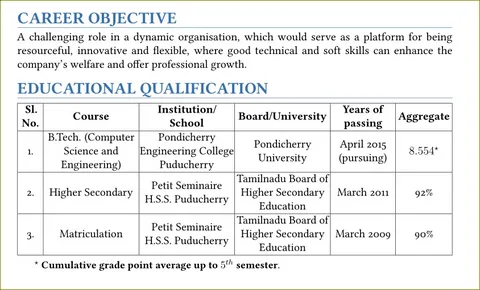Tamilnadu Educational Trust Supplementary Deed Layout
Introduction
Let’s begin with a question:
What is the reason you are here?
Perhaps you’ve been asked to amend your trust’s educational deed. Maybe your goal is to establish trustees or change the rules that govern your trust.
Maybe you’re simply overwhelmed by the legal terminology.
Relax.
This guide will take you through the entire process of completing an Tamilnadu educational trust deed supplementary format in plain, simple English.
We’ll go over the basics, why you should have it, and how to create it without losing your focus.
Sound good? Let’s go.
What Is a Supplementary Deed?

Simplifying the Concept
A deed supplement is more document.
Consider it the “follow-up” to your trust act.
You’re not throwing away the original act.
It’s just a matter of adding new information or altering existing ones.
For instance:
- The trustee you add for your trust.
- Updated rules for managing funds or real estate.
- Extend the scope that you trust.
It’s not a substitute for.
It’s more of an upgrade.
Why Educational Trusts Need It
An educational trust is normally created to oversee colleges, schools, or training establishments.
With time, things evolve.
It is possible that you will have to:
- Choose new trustees if someone has retired or quit.
- Modify the trust’s goals to include educational initiatives that are new.
- Modify how money is handled to actually achieve greater efficiency.
Without a supplementary deed, you aren’t legally able to make these modifications.
The law requires that you record and document all changes.
How Does a Supplementary Deed Work in Tamilnadu?
The Rules
In Tamil Nadu, the trust deed (and any other supplementary deed) must be governed by particular legal rules.
Here’s the basic:
- The deed supplementary to the original trust must be in line with the trust deed that was originally signed.
- It should not contradict or overrule it.
- It must be approved by all trustees involved.
- Unity is the key.
- The additional deed needs to be recorded at the same place as the initial deed.
- This is legally legal and legally binding.
Legal Checklist
When you are drafting a more deed, bear these things in mind:
- Clarity Clarity: Write in a clear manner and avoid ambiguous terminology.
- Completeness Completeness: Incorporate every piece of information—dates, names, and changes.
- Consistency Make sure it is aligned with the trust document that originally issued it.
Step-by-Step Guide to Drafting a Supplementary Deed
Step 1: Review Your Trust Deed
When making modifications, you must go through your trust deed with care.
Pay close attention to:
- The goal of trust is to serve the purpose of the.
- The rules for trustees.
- What decisions are taken?
This will help you determine what cannot and can’t be altered.
Step 2: Decide What Needs Changing
Make sure you are specific about what you’d like to change.
Common modifications include:
- Add or remove trustees.
- Change the trust’s goals.
- Modifying the rules to manage assets.
Make a note of the specific changes you’d like to make.
Step 3: Draft the Supplementary Deed
Here’s what your second document should include:
- Title: Start with something similar to “Supplementary Deed of [Trust Name].”
- Refutation of Real Deed Indicate the date and information that were in the deed’s original.
- Scope Explain the reason you’re making these changes.
- Amendments Note each modification clearly.
- Signatures: All trustees must sign.
Step 4: Consult a Lawyer (Optional)
It’s not a requirement; however, it’s a smart decision.
A lawyer can:
- Make sure that your deed is in compliance with Tamil Nadu laws.
- Help you avoid common mistakes.
Step 5: Get the Deed Signed
Once the draft is completed after that, all trustees must read it and confirm it.
This is an unassailable process.
Each trustee’s signature is necessary for the document to be valid.
Step 6: Register the Supplementary Deed
Bring the document that you have signed and deliver it to your local subregistrar’s office, where your original trust deed is recorded.
Here’s the thing you’ll need:
- The trust’s original deed.
- The extra act.
- Documents for identification of trustees.
After registration, your additional document becomes legally binding.
Examples of Changes You Can Make with a Supplementary Deed

For you to get an actual context Here are some examples:
Example 1: Adding a New Trustee
Let’s say that one of your trustees has resigned and you have to choose an interim replacement.
The supplementary deed should include:
- It is the name given to the departing trustee.
- The name and the details of the trustee who is being replaced.
- The date effective of the change.
Example 2: Expanding the Trust’s Objectives
Perhaps your trust started out focusing on the running of schools.
You are now looking to add vocational education programs.
Your extra deed will:
- It is important to clearly define the new goals.
- Check that they are in line with the purpose of the trust originally.
Example 3: Changing Rules for Asset Management
If you’re changing the way the property or funds are managed The supplementary deed will:
- intricacies of the new structure of management.
- Indicate the manner in which decisions will be taken.
Common Mistakes to Avoid
The process of drafting a supplementary deed doesn’t require rocket science.
However, people can make mistakes because they overlook small things.
Here are a few common errors:
1. Forgetting to Register
A supplementary deed that is not registered is merely a piece of paper.
It has no legal significance.
Always make sure to register the document to assure it is legal.
2. Using Confusing Language
Legal documents must be clear.
Be wary of phrases that are vague, such as “from time to time” or “as deemed necessary.”
Instead, try to be concise and specific.
3. Skipping Trustee Signatures
Every trustee has to sign the additional deed.
Even a single signature error can cause the document to be invalid.
4. Not Referring to the Original Deed
Always refer to the trust deed in the additional deed.
This indicates that the two documents are in fact connected.
FAQs
1. What is the difference between a trust deed versus a supplementary?
A trust deed creates the trust.
A supplementary deed is a way to update it.
2. Can I draft a supplementary deed myself?
Yes It’s recommended practice to talk with an attorney for any significant modifications.
3. How long does the registration process take?
It typically takes between 1-2 weeks in the case of registrars’ offices.
4. What if there’s a mistake in the supplementary deed?
You’ll have to draft and file an updated version.
5. Can I make multiple changes in one supplementary deed?
Yes, you can make multiple amendments within a single document.
6. What’s the cost of registering a supplementary deed?
The cost varies depending on the registrar’s office as well as the nature of modifications.
Extra Tips for a Smooth Process

Below are a few extra ideas to help make the process simpler:
- Keep copies Keep backup copies of your original and any additional deeds.
- Stay organized Utilize a checklist to monitor the signatures and registrations, as well as other actions.
- Communicate with trustees Make sure the trustees are all on the same page before writing the deed.
Closing Thoughts
Its Tamilnadu Educational Trust’s supplementary deed format might seem confusing initially.
It’s all the process of changing your trust to make sure it’s legally legitimate.
Step by step.
Be clear on the things you’d like to change.
Do not hesitate to seek assistance if you’re uncertain.
It’s all about keeping trust current and efficient for many decades to come.
You’ve been given this.




